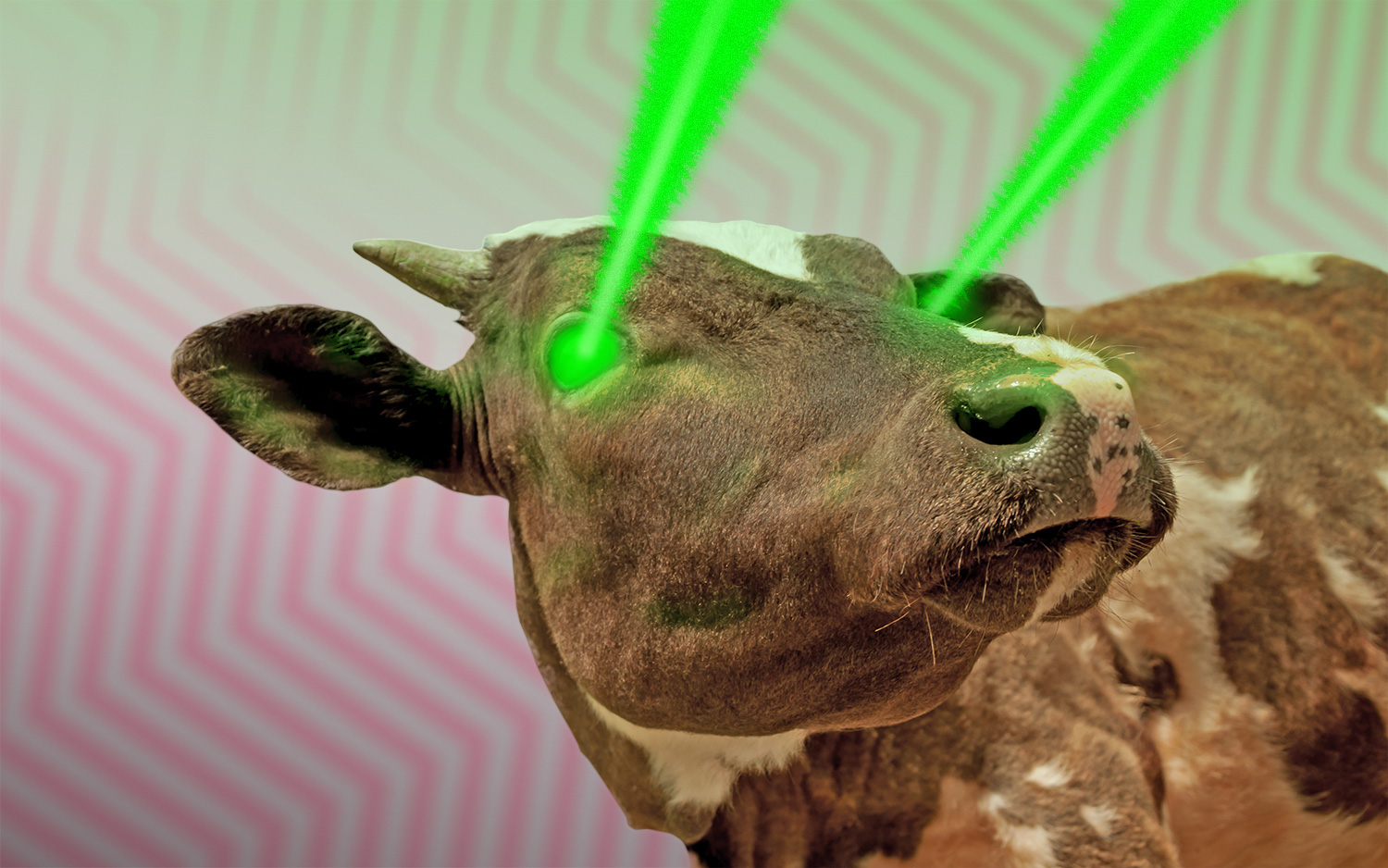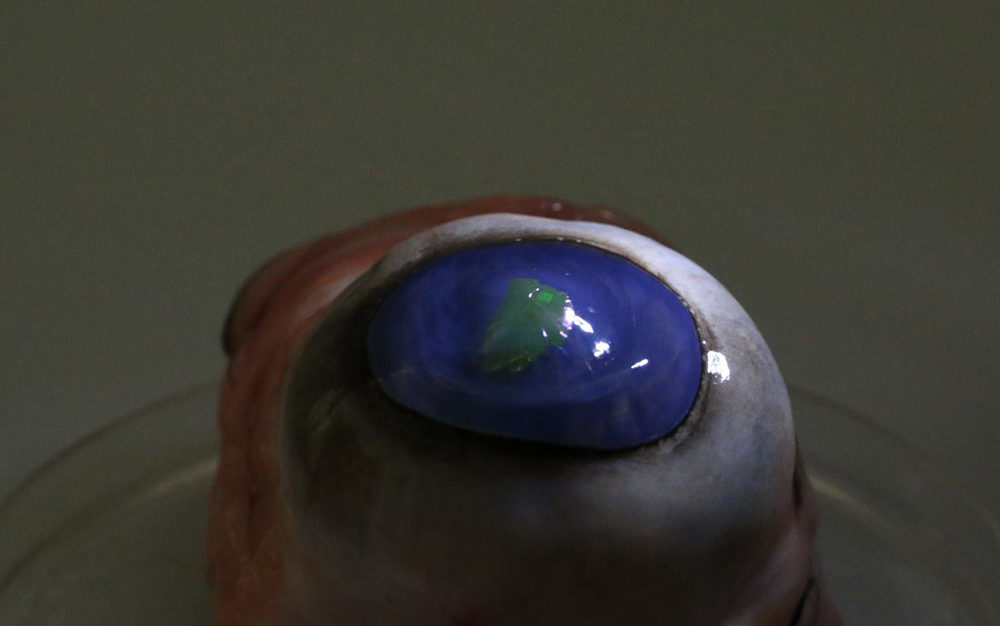Laser-Shooting Cow Eyeballs Are As Amazing As They Sound

Ordinary contact lenses just moved one step closer to letting you shoot lasers from your eyes.
Scientists recently developed the first pliable, ultrathin "membrane laser" that can be fixed to curved or delicate objects. After being charged with blue light, the membrane emits lasers; researchers tested the material by placing it on contact lenses that they then mounted on cow eyeballs, according to a new study.
But don't worry — nobody's building battalions of bovines that can blast beams from their eyes. While comic book heroes use laser vision to punch holes in buildings or disarm supervillains, contact lenses fitted with these laser films would likely be used for identification or security scans, the researchers reported. [10 Futuristic Technologies 'Star Trek' Fans Would Love to See]
Unlike other types of light, laser light does not occur naturally; it features just one wavelength and is highly directional and capable of staying focused for great distances, according to the Lawrence Livermore National Laboratory. Lasers are used for precision tools and for certain types of delicate surgery. Scientific instruments use laser pulses from satellites for remote measurements, to create 3D landscape maps and even to track Earth's rotation.
However, most lasers rely on a solid supporting structure for stability, which makes the technology rigid. To overcome that limitation, the researchers devised a method for fabricating a thin sheet on a glass substrate and then removing the glass so that the sheet could be applied to any surface, they wrote in the study.
"We have developed a new type of laser that is extremely light and thin — the whole laser being less than 1/1000th of a millimeter thick," study co-author Malte Gather, a professor with the School of Physics and Astronomy at the University of St. Andrews in the United Kingdom, told Live Science in an email.
"As a result, these lasers are mechanically flexible and can be put onto nearly any object — like a sticker, really," Gather said.
Sign up for the Live Science daily newsletter now
Get the world’s most fascinating discoveries delivered straight to your inbox.

To test the wearability of the membrane, the researchers attached samples to ordinary contact lenses. They then slipped the lenses onto cow eyeballs, which are similar in structure to human eyeballs but are somewhat easier to obtain (and which had already been removed from the cow), the researchers said. When the scientists exposed the lenses to pulsed blue light, they noted "a well-defined green laser beam" emerging from the cow eyeballs, the scientists wrote in the study.
The researchers calculated the amount of light required to charge and operate the laser, finding that it fell within a safe range for use in a living cow eye — and in a human one.
In addition to their potential for use as wearable ID sensors, these membrane lasers are flexible enough to be attached to banknotes or documents as security tags, the scientists said.
The findings were published online May 1 in the journal Nature Communications.
Original article on Live Science.

Mindy Weisberger is an editor at Scholastic and a former Live Science channel editor and senior writer. She has reported on general science, covering climate change, paleontology, biology and space. Mindy studied film at Columbia University; prior to Live Science she produced, wrote and directed media for the American Museum of Natural History in New York City. Her videos about dinosaurs, astrophysics, biodiversity and evolution appear in museums and science centers worldwide, earning awards such as the CINE Golden Eagle and the Communicator Award of Excellence. Her writing has also appeared in Scientific American, The Washington Post and How It Works Magazine. Her book "Rise of the Zombie Bugs: The Surprising Science of Parasitic Mind Control" will be published in spring 2025 by Johns Hopkins University Press.










